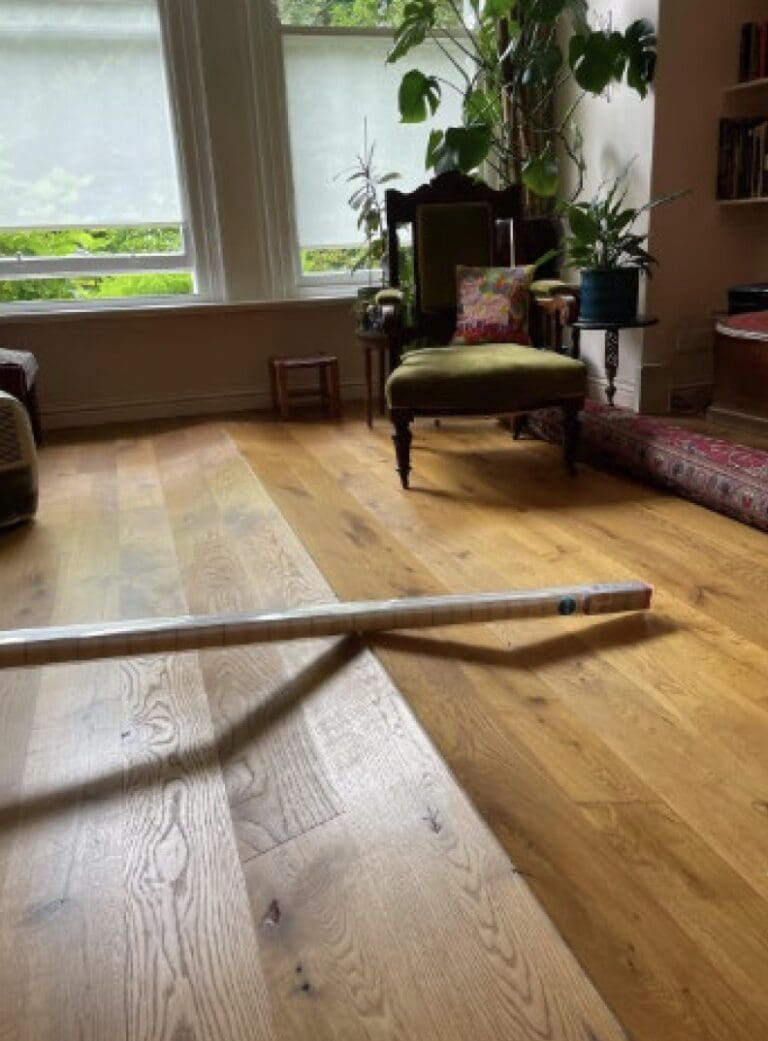
Solid Timber Flooring Buckling, Tenting, and Panelisation
You must log in to ATFA as a member (with an active account) to view this content! Not a member? Join today. Username Password Remember
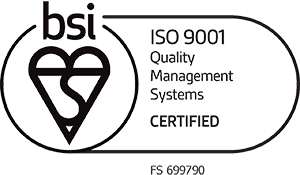
There are many considerations an employer or contractor must be mindful of when it comes to Occupational Health and Safety. The main priorities are to protect people from harm and in the timber flooring industry include (but are not limited to):
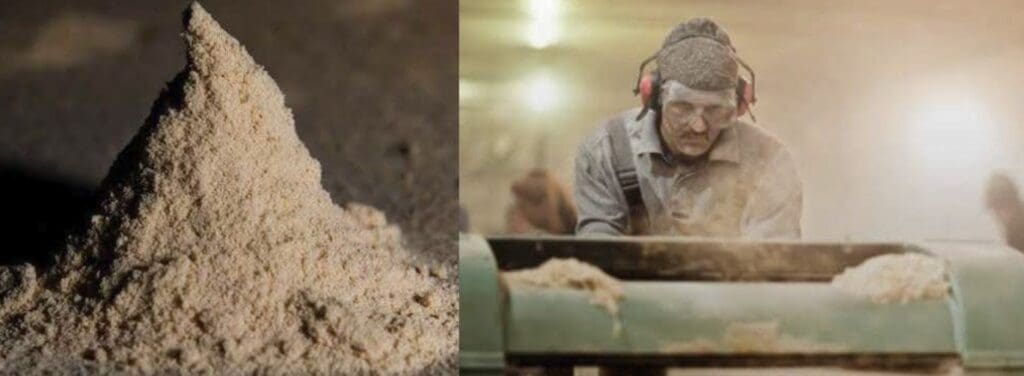
Wood dust
No, not all wood dust is the same “and it can be deadly” and life-debilitating.
Dust from soft woods is not as fine as the dust that comes from hardwoods, this dust when combined with products containing formaldehyde is classified as a group 1 carcinogen (cause of cancer).
Larger dust particles get trapped in your upper respiratory system. Finer dust particles are drawn
further into your lungs leading to irreversible damage and scarring of the tissue, this then sets the
ideal environment for the creation of cancerous growth cells.
Figure 1. Categories of occupational respiratory disease, their anatomical locations within the respiratory
system, examples of common causative substances and their pathophysiologic effects
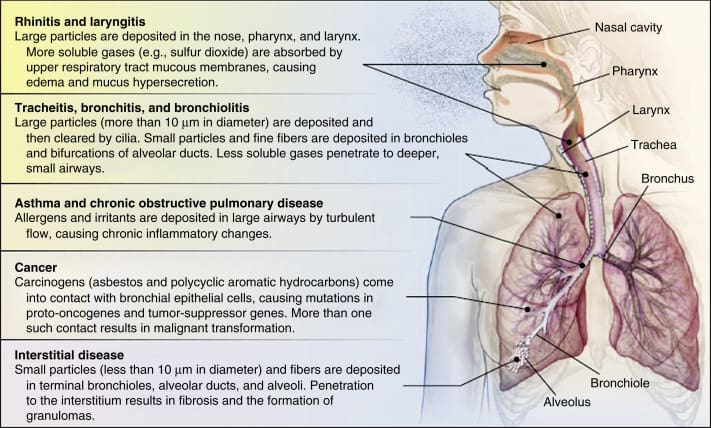
Source. Beckett WS. Occupational respiratory diseases. N Engl J Med 2000: 342.406-13
Silica Dust
The dust you can see often isn’t the problem. It’s the dust your eyes aren’t capable of seeing that’s the problem. Your nose and bronchial tube deal with the dust you can see, your lungs get to deal with the dust you can’t see. Your nose and bronchial tube aren’t designed for or capable of filtering this dust out, for example, silica dust is 100 times smaller than a grain of sand, so you can be breathing it in without knowing. That size of dust particle – less than 10 micron (10 μm) – is mentioned in the last four illnesses in the example above (Figure 1). See also Silica Exposure levels Australia
and WES NZ.
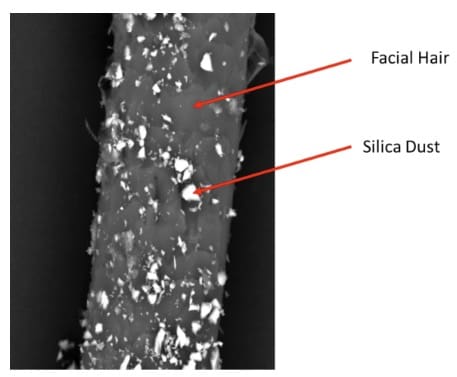
Fig 2. human hair with silica dust
Fumes and vapours
Fumes and vapours are present as a result of the materials that you work with, for example, cutting and sanding laminates, particleboard/ chipboard, adhesives and surface coatings applied during their application and curing, solvents used in the preparation, application and clean-up processes.
Exposure levels
Exposure levels applicable to dust, fumes and vapours are set by Safe Work Australia and WorkSafe NZ. If you suspect that you are exposing workers to these levels, you have an obligation to monitor this and provide appropriate controls to prevent harm. If you are required to wear respiratory equipment and due to the small size of particles (which you can’t see), then these must be fit tested whereby the effectiveness of the seal between the respirator’s face piece and your face is tested. If the mask isn’t fitted correctly, you will be breathing in the dust and you won’t even be aware of it. If a mask isn’t fit tested to verify that there are no gaps and leakage around your face, the mask is useless.
Note: To ensure the effectiveness of a respirator, it is necessary to have staff and workers fit tested and for them to be trained in its proper use, maintenance and storage (NB. it is possible to buy a approx. $30.00 respirator that indicates its compliant to AS/NZS 1715:2009 Selection, use and maintenance of respiratory protective equipment, however, that compliance only applies to the filter and not the mask itself, hence the reason it needs to be fit tested). Many masks have been tested (including disposables) and many of them fail as they don’t correctly fit the user’s face, it’s a bit like no single shoe size fitting all.
WorkSafe or other Regulator in your jurisdiction may provide additional information on fit testing, many organisations can provide FIT testing services, and/or the training necessary.
Extraction at source
The preference is to control wood dust at source, by using on-tool extraction on saws, sanders and other equipment. Links to the relevant guidance is provided below in Figure 3. Legislation referring to the exposure limits for hardwood and other dusts are also provided. Figure 3. Extraction approach to sanding equipment
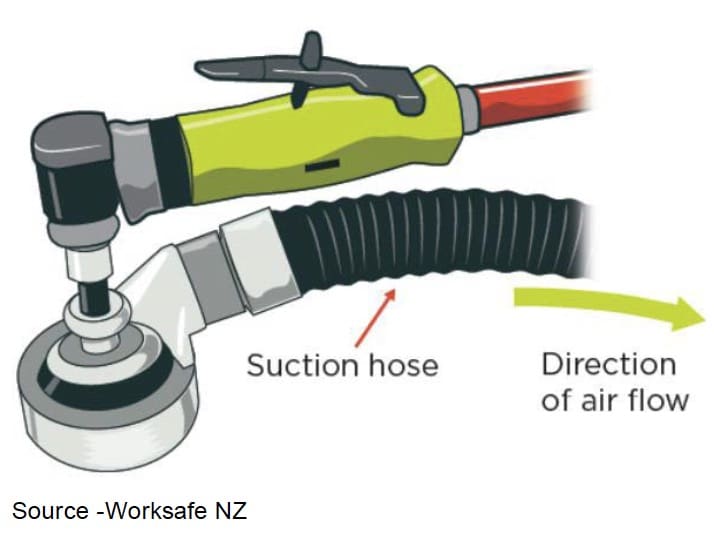
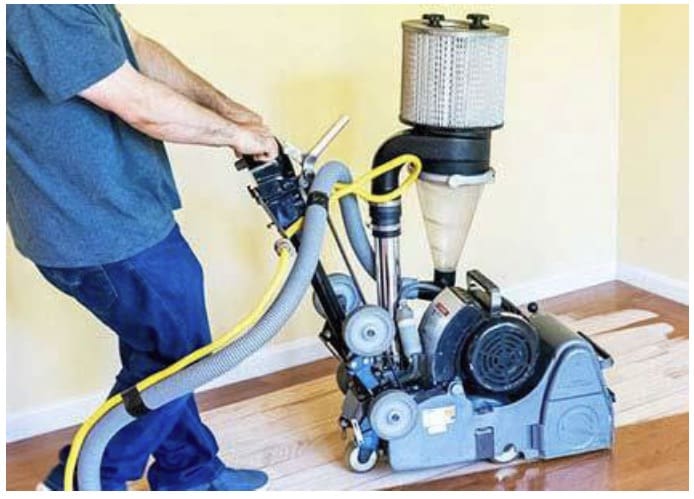
The hierarchy of controls illustrated in Figure 4. suggests that if a hazard cannot be eliminated then either substitution or isolation by means of on-tool dust extraction at source with correctly rated filters should be considered prior to the use of dust masks which are less effective at preventing harm from airborne dust.
Figure 4. The Hierarchy of Controls
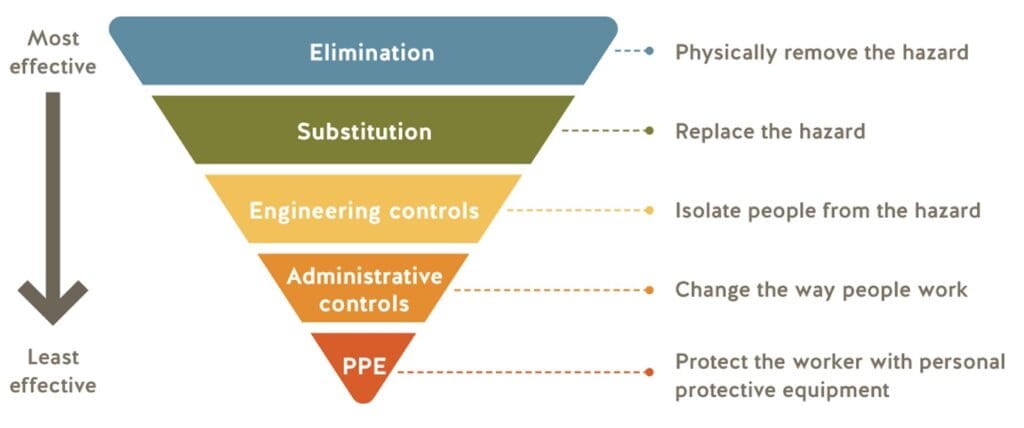
| Elimination | This could be used to eliminate others as in sealing the area and having one person carry out the work, ensure they are monitored that they are ok during this process. |
| Substitution | This one is a bit difficult as we cant substitute what had been added in the production process or sealing once it was laid. |
| Isolation | Restrict access to those not directly involved in the work as they are your responsibility as well. |
| Engineering | The filters mentioned below are considered engineering controls. |
| Training & administration | Training is a great start, training has to be followed up with supervision and monitoring to ensure they are doing as trained. |
| PPE | Ensuring the PPE as is identified in the SDS for the products you and your team are exposed to, this also includes Respiratory Protective Equipment and FIT Testing. |
M Class Filters (Medium Risk Dust)
M Class HEPA Filters are filters designed to manage medium risk dusts which include soft wood dust, dust from repair compounds, filler and clear coats, dust from cement, concrete and tile cement,
quartziferous materials such as sand and pebbles, and even paints such as latex and oil paints. The occupational exposure limit for soft wood dust is > 5 mg/m3 in Australia and > 2 mg/m3 in NZ, which
means you need a dust extractor that catches 99.9% of the dust.
H Class Filters (High Risk Dust)
H Class HEPA Filters are filters designed to manage high risk dusts which include dust containing carcinogenic or pathogenic particles as well as mould spores, asbestos, mineral fibres, bitumen and
artificial mineral fibres such as glass wool. The occupational exposure limit for hardwood dust is < 1 mg/m3 in Australia and NZ, which means you need a dust extractor / vacuum system that catches 99.995% of the dust.
Personal protection
Stop the practice of cleaning up using compressed air to clean up. When you use air pressure to remove dust from your clothing or equipment, you reactivate it, make it airborne and expose yourself and others you work with to more dust.
Always clean up as you go. You should be doing this for a better coating outcome anyway!
Get your team wearing the correct Personal Protective Equipment (PPE) Including Respiratory Protective Equipment (RPE). Ensure it’s the right RPE that workers have been trained in correctly
using, storing and maintaining it and that it’s fit tested by a competent person.
Note: Whilst the RPE packaging may say it is compliant to AS/NZS 1715 – 1716, that only applies to the filter. Fit testing is required to confirm the mask is correct and appropriate. It will only be effective if the face is clean-shaven for instance.
WHS Regulations (Qld, NSW, ACT, Tas, SA, Victoria, WA and NZ), state the obligation to monitor dust levels where they exceed the exposure standard. The exposure standards for hardwood are
TWA 1 mg/m3 and softwood TWA 5 mg/m3 (Aus) and 5 mg/m3 (NZ). This is a very small amount of dust and as earlier mentioned, the dust particles that do the damage are too small for the human eye to see. With this information and known facts around dust, this therefore is the requirement for the use of fit tested Respiratory Protective Equipment (RPE) as well as appropriate training for users.
PPE – Personal Protective Equipment
As you will see from the Hierarchy of Controls in Figure 4 on the previous page, PPE is seen as the last line of defence in protecting workers from exposure.
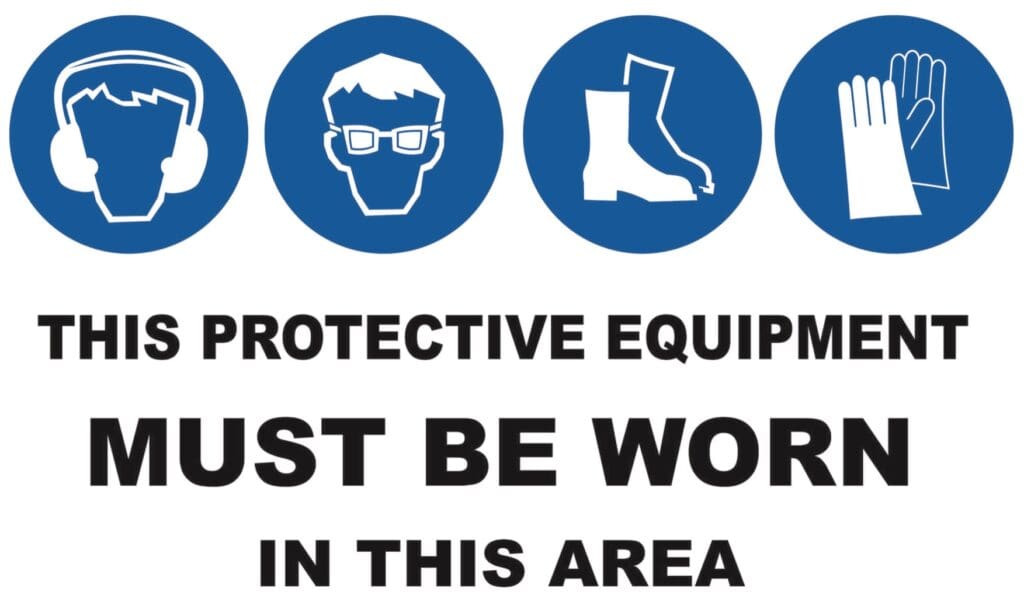
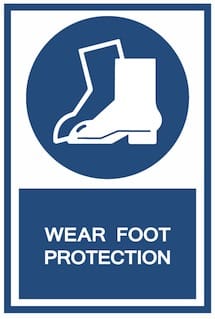
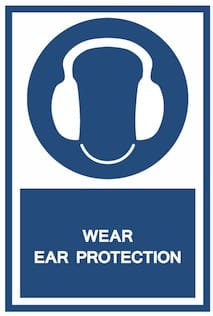
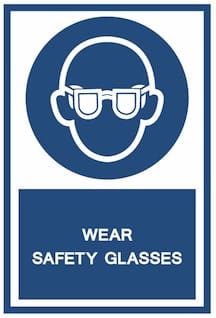
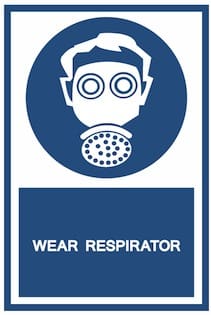
Fig 5. PPE safety signage.
PPE used must be specific to the chemical substances and environment that workers are exposed to, for this, section 8 of all Safety Data Sheets (SDS) is the source of information.
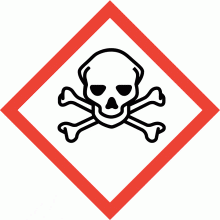
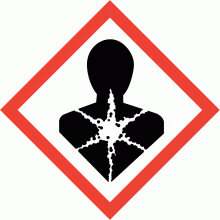
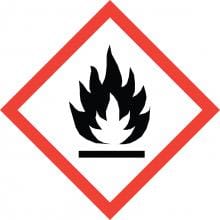
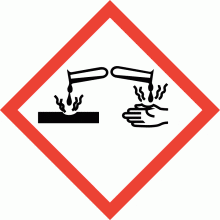
Smart things to include are details about its Dangerous Goods (DG) Class, its Hazchem Code, its United Nations (UN) number and SDS expiry dates. It would be a wise move to conduct a Risk
Assessment on some of the work and environments in which your workers are exposed to Hazardous Chemicals. This information is found in Section 14 of Safety Data Sheets.
Figure 7. Example of Section 14 of Safety Data Sheets
| SECTION 14 – TRANSPORT INFORMATION | |
| UN number | 1193 |
| Proper shipping name | Methyl Ethyl Ketone |
| Dangerous Goods class | 3 |
| Dangerous Goods packing group | II |
| Hazchem code | 2YE |
Where workers are exposed to hazardous substances (e.g. isocyanates, asbestos, wood dust etc.), there is an obligation to undertake health monitoring which must be carried out by an occupational health practitioner (Qld, NSW, ACT, Tas, SA, NT, Vic, WA, & NZ). There are some further important constraints that need to be addressed in meeting these requirements regarding confidentiality and the time records are maintained etc.
Noise and vibration are very closely linked. Vibration and the exposure to continual vibration have an effect on long-term hearing disorders. Figure 8 provides the acceptable exposure levels.
There are a few simple steps you can take to identify the levels of noise your team is exposed to:
The law requires that you do not harm you workers by exposure to excessive noise as indicated in the adjacent table (e.g. not greater than to an equivalent of 85 decibels averaged over 8 hours, or a peak noise level over 140 decibels). You should regularly review this and retain the information as this will assist in training your workers on why the wearing of hearing protection is important and the
need for them to accept some responsibility to address by wearing hearing protection.
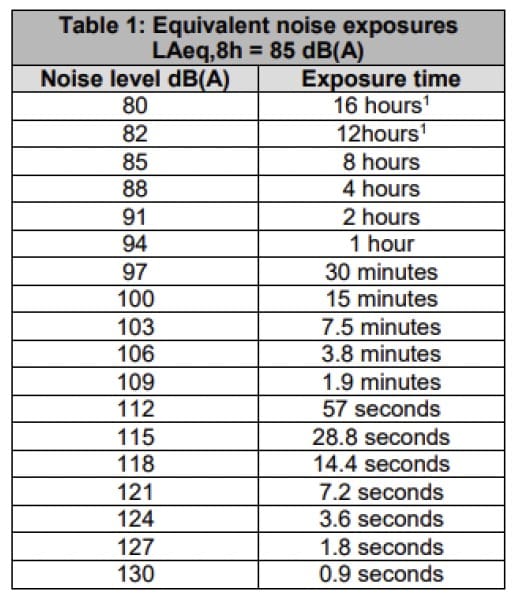
Figure 8. provides the acceptable exposure levels
One of the challenges with noise induced hearing loss is that its effect can take time to manifest itself to a noticeable degree. The addition of impact or vibration can increase the likelihood of hearing loss, tinnitus and depression brought on by the fact that we aren’t heard or that others can’t hear us, which in turn can create a sense of alienation and isolation.
Exposure to constant vibration can lead to Hand Arm Vibration Syndrome (HAVS). This ailment has a number of limiting effects and can be very painful and restrict or cause sleep issues which can lead to other problems with the detrimental effects felt by both the person suffering the ailment, family and the employer.
Many of the tools we currently use within our workplace have the potential to cause these issues.
There are some simple steps you can implement to minimise/reduce the risk of exposure:

Effective equipment guarding is an essential but sometimes controversial matter amongst workers who may claim that guarding interferes with the task at hand. Tools such as grinders, sanders, saws etc. are supplied with guards with the expectation that they will be fitted and used so as to prevent harm.
Legislation is very clear and the consequences of not following appropriate practices are severe (Qld, NSW, Act, Tas, SA, NT, Vic, WA & NZ. Regulators will reference AS/NZS 4024 Safety of
Machinery Standards, when in doubt.
You will be seen as neglecting your duty of care by the Regulator should you knowingly allow members of your team to de-activate / remove safety guards / switches or controls.
You must ensure that your workers are trained in the safe use of equipment. Employers need to be able to verify and record the training provided. Once that training is completed, as an employer you need to monitor and ensure that the person trained is following the instructions and guidance that was provided in that training.
The risk associated with electrically operated power tools needs to be assessed such as battery operated tools may be substituted as safer alternatives. Where mains power is required, ensure power tools are always run through Residual Current Devices (RCDs). The trip switch on RCDs should be tested daily and RCDs and other appliances and leads tested and tagged every 3 months.
Manual handling is likely to be one of the most common exposures to harm that your workers will face.
Running countless training sessions on manual handling, the one question always asked is:
“when was the last time you watched a 2-year-old child lift something?”
If you can recall, they’ll have lifted the same way as the image (below). By the time they are five, as parents we will have taught them to bend at the waist not as they did when they were two. Correct posture and movement when lifting is essential, as shown below. While correct technique is important, some things are too heavy for one person to lift, if in doubt or straining seek assistance.
There are a few common links between muscular skeletal injuries and your work activities of which you and your employees need to be aware. Athletes are more susceptible to injury when they are fatigued, and the same applies to physical work. Drinking energy drinks and the likes of coffee and cola dehydrate your body, so the habit of having a few energy drinks before you start work is actually exposing you to a greater likelihood of an
injury – though something is better than nothing. Water is undoubtedly one of the greatest drinks to re-hydrate your body.
Your back muscles are amongst the hardest to hydrate, your discs even harder. When you couple working on a hot day and drinking energy drinks, you are exposing yourself to the risk of severe injury with the most susceptible area likely to be your back.
Carrying out repetitive actions also won’t do you any favours, so ensure you and your team take adequate breaks, drink plenty of water and get good sleep.
Fig 10. Correct lifting technique.
There are so many facets to this particular subject.
A PCBU (person conducting business or undertaking) has specific obligations under the Regulations to manage the risk, as far as is reasonably practicable, of someone falling from one level to another.
This includes requirements to:
Preventing falls should be actively managed so that people working at height are kept safe.
Starting with falls at ground level and some of the equipment that people use. It is always essential that you clean up and remove rubbish, slip, trip and fall hazards as they are created.
Both of the items below are called bear traps. Standing on milk crates (considered ground level equipment by some) is as good as standing on a bear trap waiting for it to close on your ankle. When
you fall through a milk crate it will do severe damage to your tendons and ligaments. They are designed to hold roughly 20 litres or 20 kg, so weighing in at 85 kg is pushing it way beyond its
design limits.
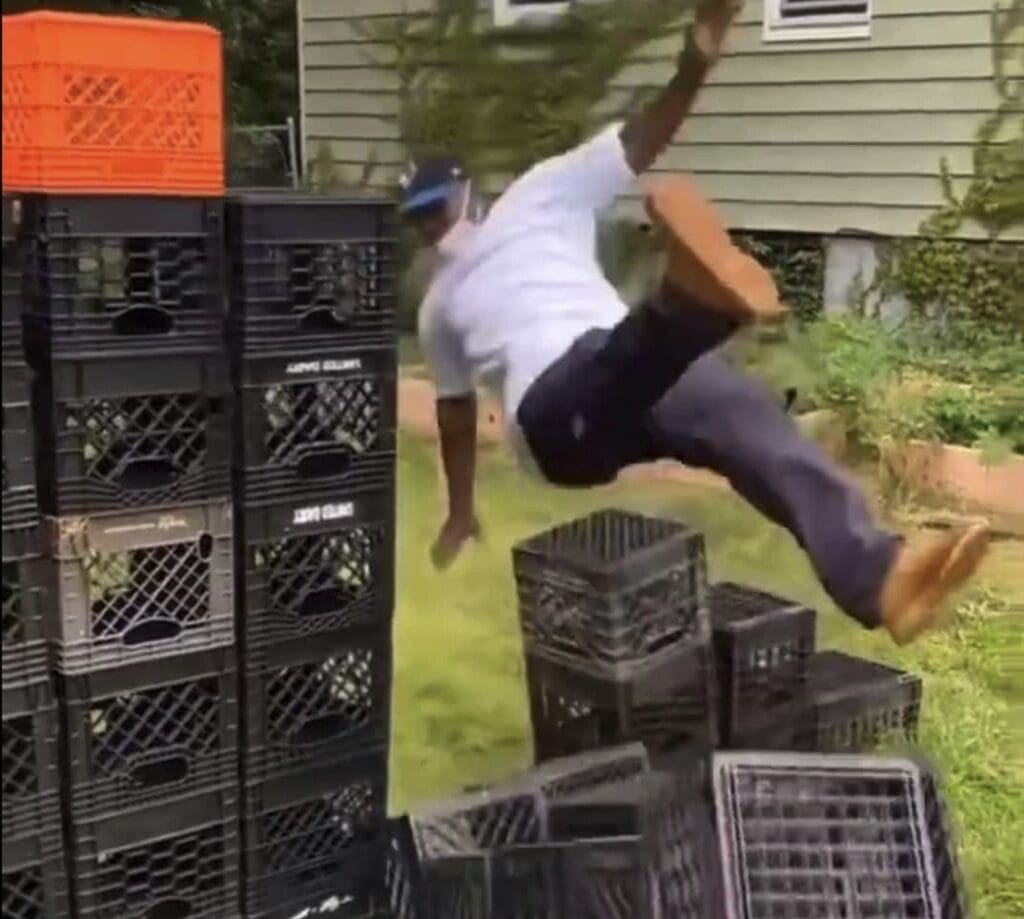
Fig 11. Risks associated with standing on milk crates.
When working at height from ladders or using ladders to access another level, ensure three (3) points of contact are maintained. The ladder must go at least a metre past the step off point. Step
ladders must not be used to access another level.
Falls greater than 2m (commercial environment) or greater than 3m (residential) are of particular concern and we strongly advocate you provide effective fall protection, or restraint must be provided.
When working on upper levels in two or more storied buildings, void protection must be provided around floor openings/stair well voids or open edges (stairs/stairwells) without balustrading or
handrails are open edges (Figure 12).
Figure 12. fall hazards
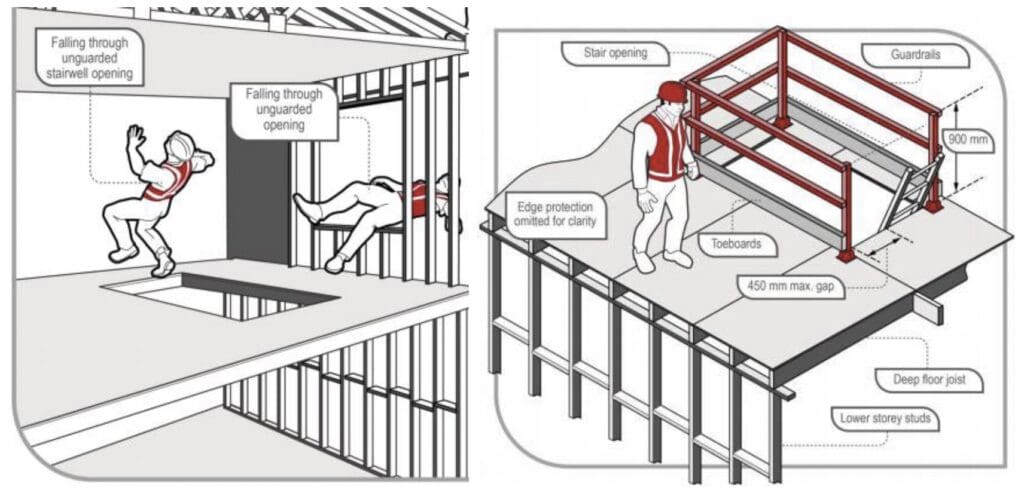
If a fall were to occur, you would be required to provide evidence that there was a greater control than training as indicated in the Hierarchy of controls (Figure 4).
One of the biggest electrical concerns for floor sanders is sanding over electrical cables connected to sanders. Often operators are compelled to drape the electrical cable around their neck to avoid sanding over them. This is an Extremely dangerous practice, it only takes one small nick in the power cable and you may be electrocuted. Sanding machine companies have cable holding attachments these days.
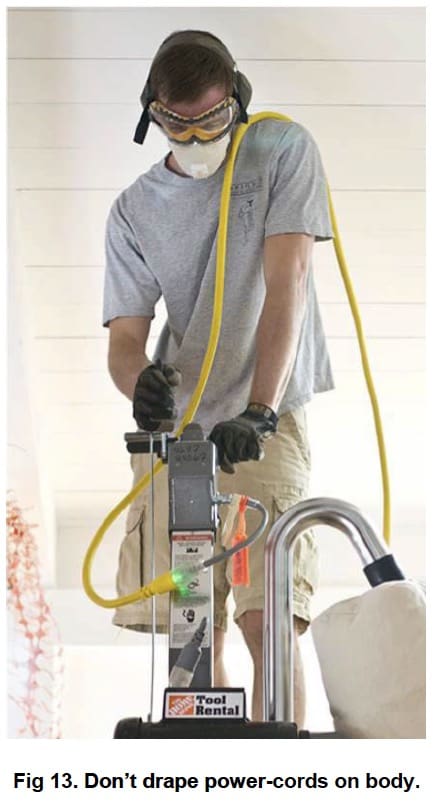
Where vehicles are required to carry stock, quantities of flooring sealants and solvents/coating liquids, and those chemicals are classified as Hazardous Chemicals, there are specific precautions
that need to be taken into account. If the substances fall below a threshold or limit that is prescribed by the relevant Authorities, that can be carried without placarding and by ensuring:
The Australian and NZ limit is 250 litres (flammable gases and liquids) (NZ, Aus) which includes products such as coatings and adhesives. If you exceed these quantities, then the vehicle must
comply with the appropriate rules relating to the transportation of the dangerous goods including the need for relevant placarding and documentation etc. (NB. it is our recommendation that you carry
less than the threshold quantities so that you avoid this requirement).
Care must be taken to ensure dangerous goods are stored correctly in the vehicle (within contained cabinets with no ignition sources), vented outside the cabin compartment to prevent ignition and
protect vehicle occupants from dangerous fumes. Products with Hazchem labelling must not be transported in the passenger compartment of vehicles.
Once you exceed these quantities you must display the appropriate placards on the front and rear of
your vehicle. For example:
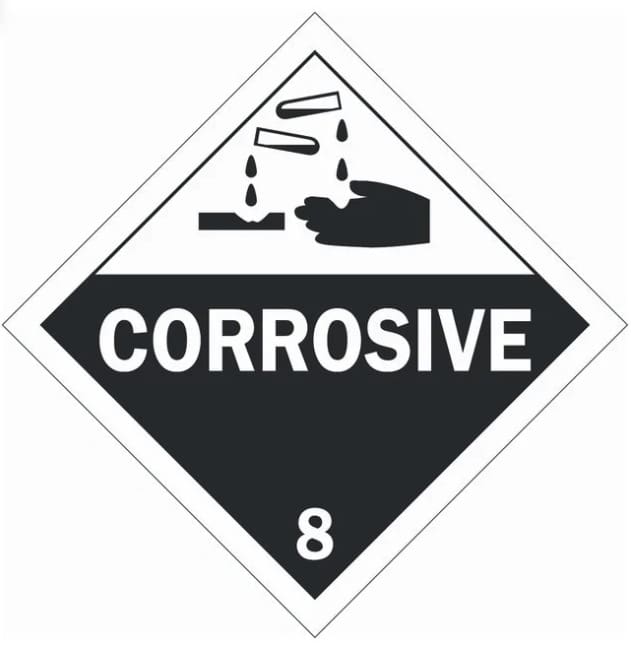
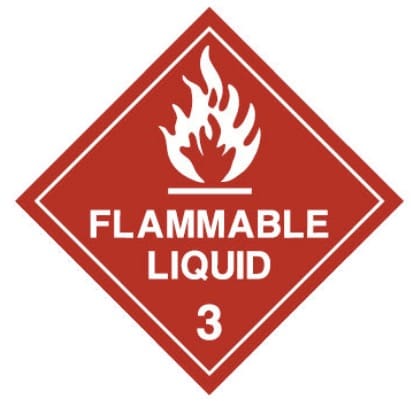
Fig 14. Placarding for vehicles
Please refer to your jurisdictional requirements via your WH&S authority, as this area does vary and the documentation for loads exceeding 250 litres is considerable. Changes to this legislation are also imminent.
What to do when there’s an incident Let’s take a step back prior to the accident. First off is an evaluation of what First Aid Equipment you need to have available given the type of industry and hazards that are present. For example, having a box of band aids when your team uses sanders and saws is futile given the injuries likely to be
sustained from a saw won’t be addressed by those. What also needs to be considered is how long it will take for assistance to arrive or where you need to transport a worker to, who has fallen and broken a leg or a partially severed finger from a power saw incident.
Your first response, providing it doesn’t expose you or others, is to remove the victim from the area and any further danger, in moving injured personnel, doing so depends on the injury. You may make
it worse, ask for support and guidance by phoning Emergency Services (111 (NZ), or in Australia 000 (or 112 if there is little or no reception for mobiles). They will generally guide you through the process until support can assist.
There is a significant list of incident types that must be recorded, the links provided Notifiable and Reportable incidents (Aus) and Notifiable event (NZ) will clarify what is required to be notified. Be
mindful that in most instances where a medical certificate is written out, the regulator within your jurisdiction will know about the incident, and penalties for failure to lodge are high.
The following is designed to assist you in checking your OH&S requirements – it is not necessarily exhaustive, and we recommend you obtain your own professional assistance to reflect your
individual business requirements.
| Item | Your Action √ | |||||||
| You and/or your staff arewearing the correct personal protective equipment for the task(s) related todust, fumes and/or chemicals. | ||||||||
| You and/or your staff arewearing the correct respiratory protective equipment (RPE) for the task(s)related to dust, fumes and/or chemicals. | ||||||||
| You and your staff have beenfit tested for the RPE equipment you are using. | ||||||||
| You are checking and recordingfit testing procedures regularly. | ||||||||
| You are usingextraction/vacuum with correct filters on all your dust creating equipment. | ||||||||
| You and your staff are notusing compressed air to clean down. | ||||||||
| You have conducted a riskassessment of hazardous chemicals at your workplace and in your vehicle(s). | ||||||||
| You have actioned healthmonitoring with an occupational health practitioner, for you and your staff,in respect to chemicals used in the workplace and are maintaining securerecords. | ||||||||
| Your business is monitor noiselevels. | ||||||||
| You are maintaining noiselevel recording records. | ||||||||
| You and/or your staff aretaking the required breaks when using vibrating equipment | ||||||||
| You are ensuring the correctequipment is being used for the task at hand. | ||||||||
| You are ensuring that allrequired guarding is being used on all equipment at all times while inoperation and connected to power (electric and/or battery). | ||||||||
| You have undertaken, verifiedthe user is competent and recorded the staff | ||||||||
| members use of all types ofequipment being used. | ||||||||
| You are using Residual CurrentDevices (RCDs), when using mains power equipment. | ||||||||
| Equipment that uses mainspower is tested and tagged by an accredited testing business. | ||||||||
| You have assessed staff toensure they are using correct lifting techniques and continue to monitortheir technique. | ||||||||
| You and your staff are usingthe correct equipment when working at heights, including fall protectionrestraints where required (including any necessary training). | ||||||||
| You and your staff areensuring that void protection is being utilised when working at two or morestoreys high. | ||||||||
| You are displaying therequired placarding on your vehicle(s) when carrying chemical based products. | ||||||||
| You and your staff arefamiliar with first aid actions. | ||||||||
| First aid supplies areavailable to all staff, at all times. | ||||||||
Please also use the SWMS freely available to ATFA members.
The technical information in this Information Sheet has been kindly provided by Brian Simpson of Inca Business which provides WH&S compliance management solutions tailored to the needs of individual businesses across Australia www.incabusiness.com or admin@incabusiness.com

You must log in to ATFA as a member (with an active account) to view this content! Not a member? Join today. Username Password Remember
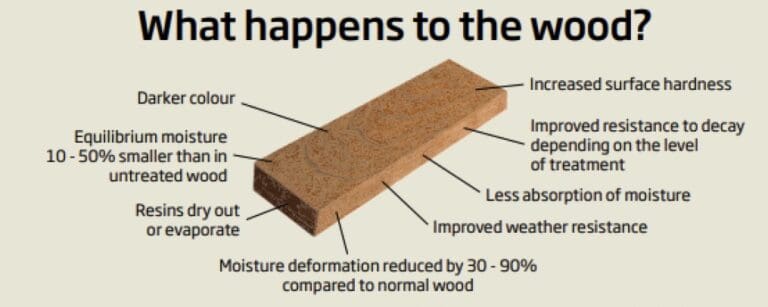
You must log in to ATFA as a member (with an active account) to view this content! Not a member? Join today. Username Password Remember
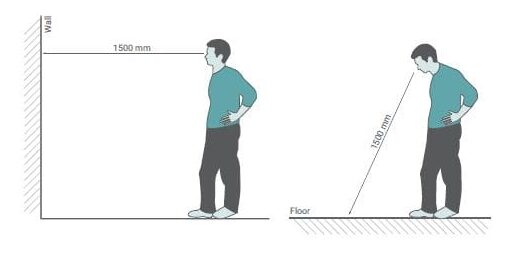
You must log in to ATFA as a member (with an active account) to view this content! Not a member? Join today. Username Password Remember